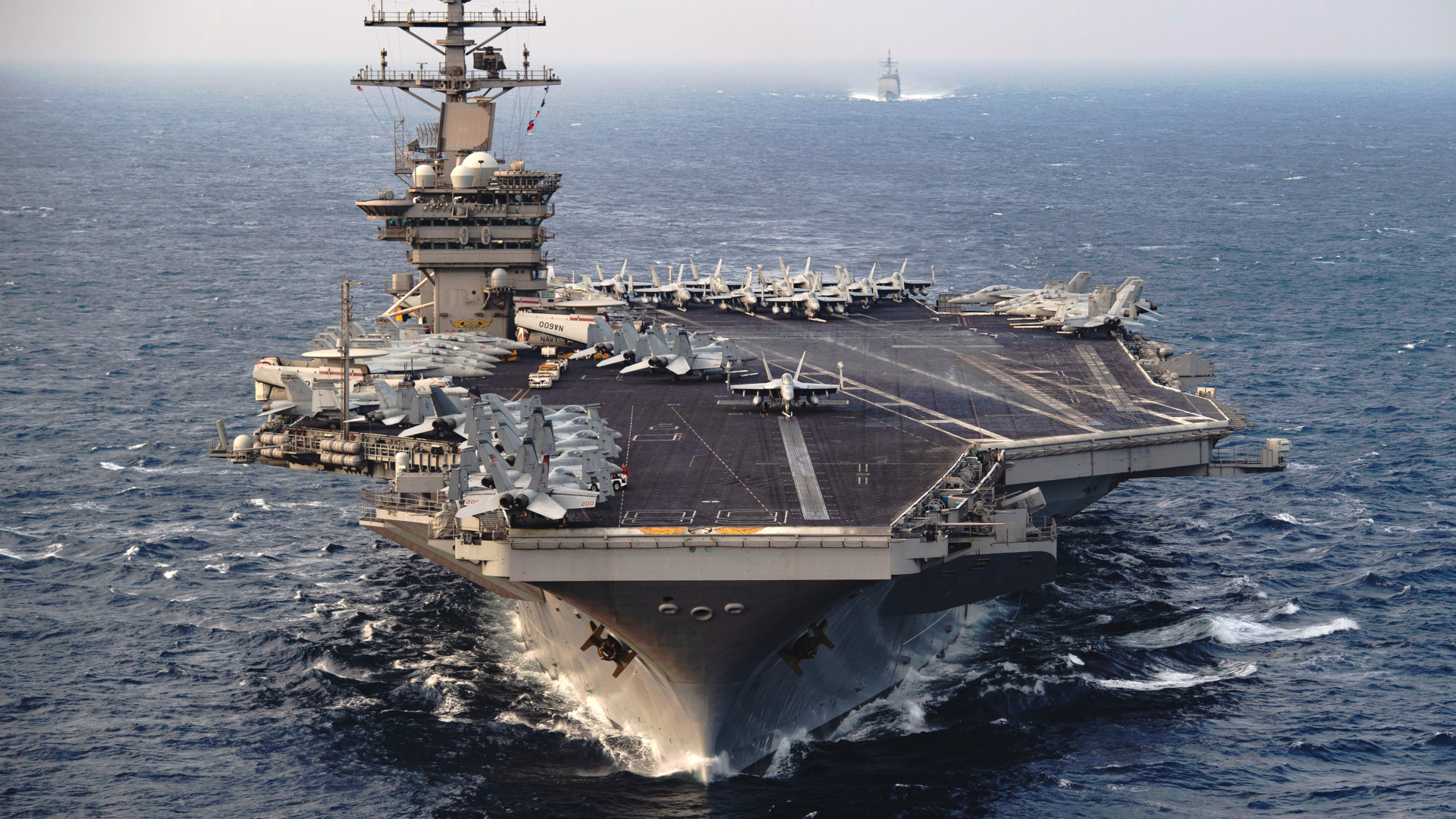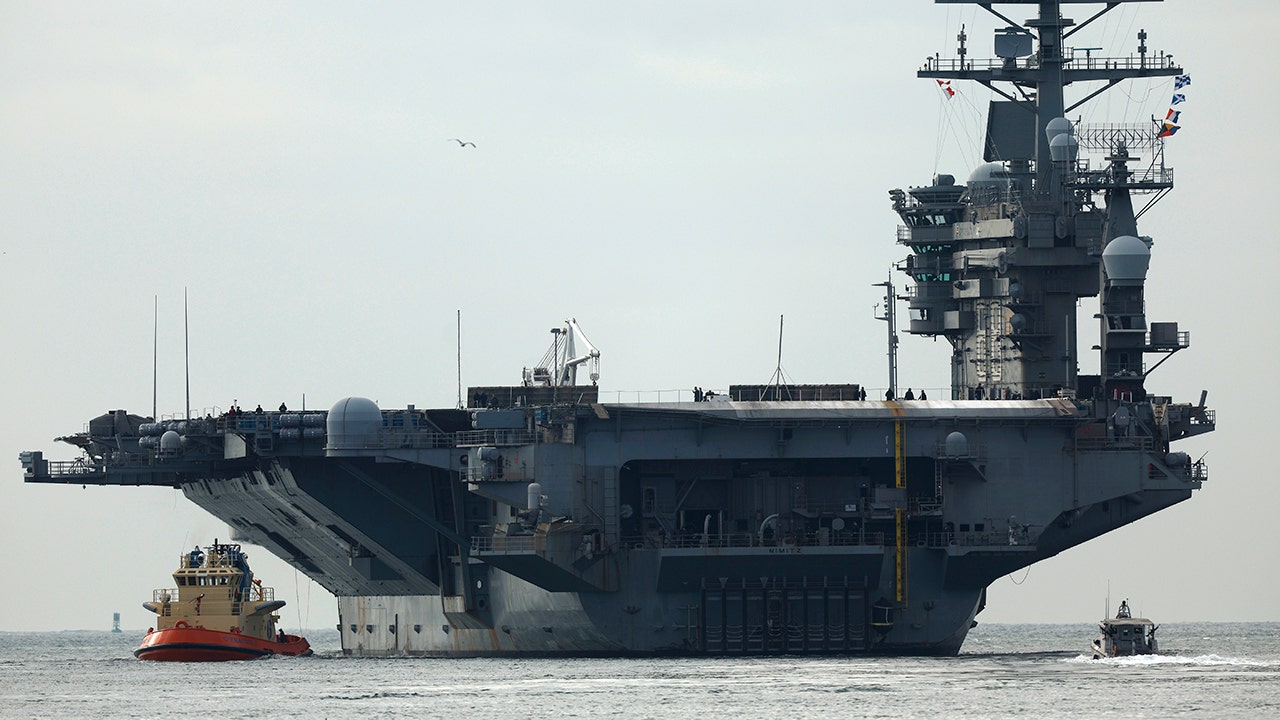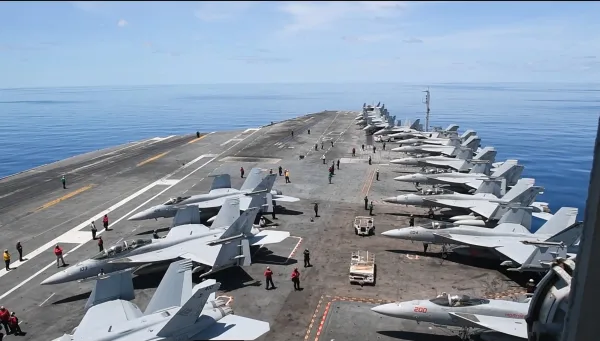In a strategic move reflecting the heightened security situation in the Middle East, the United States has deployed the USS Nimitz (CVN-68), one of its nuclear-powered aircraft carriers, to the region. This follows the continued escalation of hostilities involving Iran and Israel, with the U.S. reinforcing its regional military posture to ensure preparedness and stability.

U.S. Military Adjusts Carrier Deployment Strategy
According to a Reuters report, the USS Nimitz—previously scheduled to transit the South China Sea and make a port call in central Vietnam—was redirected due to what U.S. officials described as “an emergent operational requirement.” The change in trajectory was independently verified by MarineTraffic, a vessel-tracking platform that monitors global ship movements in real time.
The USS Nimitz, the oldest active nuclear-powered aircraft carrier in the U.S. Navy, had been operating in the Indo-Pacific theater prior to its reassignment. The ship had participated in various naval operations alongside regional allies before receiving new orders to head toward the Middle East.
This deployment follows the continued presence of the USS Harry S. Truman in the region, marking a rare instance of two American carrier strike groups operating simultaneously in Middle Eastern waters. The dual-carrier presence is intended to reinforce maritime security and deter potential escalations.

Increased Tensions in the Region
Tensions in the Middle East have intensified following a series of reported missile exchanges between Israel and Iran. While details vary depending on the source, the confrontation has prompted international concern. The U.S. Department of Defense has not officially confirmed direct involvement in these exchanges but has emphasized the importance of regional stability and the need to protect American personnel and allies.
The broader context includes military activity involving groups such as the Houthis in Yemen, whom the United Nations has previously identified as being supported by Iran in various capacities. In earlier incidents reported in 2024, U.S. Navy aircraft operating from American carriers faced threats in the Red Sea region. These developments highlight the complexity of operational environments in the Middle East, where multiple state and non-state actors are involved.

Refueling Aircraft Repositioned to Europe
In addition to redirecting the USS Nimitz, the U.S. military has reportedly repositioned several aerial refueling tankers to strategic bases in Europe. This logistical adjustment is designed to provide the U.S. with greater operational flexibility for air missions in the Middle East and surrounding regions, should such missions be deemed necessary.
Aerial refueling capabilities are critical for extending the range and endurance of combat and reconnaissance aircraft. By stationing tankers closer to potential conflict zones, the U.S. can reduce response times and improve mission sustainability without escalating conflict directly.
While officials have not disclosed the exact number or location of the refueling assets, defense analysts from institutes such as the Center for Strategic and International Studies (CSIS) have previously highlighted the importance of such logistical capabilities during periods of regional tension.

Strategic Significance of the USS Nimitz
Commissioned in 1975, the USS Nimitz is the lead ship of its class and remains a central element of U.S. naval power. Despite its age, the carrier has undergone multiple refits and modernization efforts, enabling it to remain fully operational. It can deploy up to 90 aircraft and supports a variety of missions, including combat air patrols, intelligence gathering, and humanitarian assistance.
Its deployment to the Middle East alongside another carrier group underscores the Pentagon’s emphasis on rapid force projection in volatile regions. Carrier strike groups typically include destroyers, cruisers, and supply ships, offering a comprehensive range of military capabilities.
According to the U.S. Navy, the presence of aircraft carriers in key maritime zones serves both as a deterrent and as a platform for diplomatic engagement with allies and regional partners.

Diplomacy and Military Readiness
The redirection of the USS Nimitz and the expansion of aerial refueling capabilities are part of a broader strategy aimed at maintaining readiness while supporting diplomatic efforts. The U.S. Department of State has reiterated its commitment to working with regional stakeholders to de-escalate tensions and encourage dialogue.
At the same time, the U.S. military maintains the capacity to respond to potential threats to its forces, interests, and allies. The Department of Defense continues to evaluate the situation closely and is in regular communication with NATO and Middle Eastern partners.
As emphasized in official U.S. Central Command (CENTCOM) briefings, the military presence in the region is not intended to provoke conflict but to ensure stability and freedom of navigation, particularly in critical waterways such as the Strait of Hormuz and the Red Sea.

Conclusion
The deployment of the USS Nimitz to the Middle East reflects the dynamic nature of U.S. military strategy in response to rising tensions between Iran and Israel. By increasing its military footprint in the region, the United States aims to bolster deterrence, support regional partners, and maintain the security of key maritime corridors.
All developments cited in this article are based on official sources, including reports from Reuters, MarineTraffic, U.S. Navy public statements, and other reputable defense analysis institutions. No speculative or unverified claims have been included.
